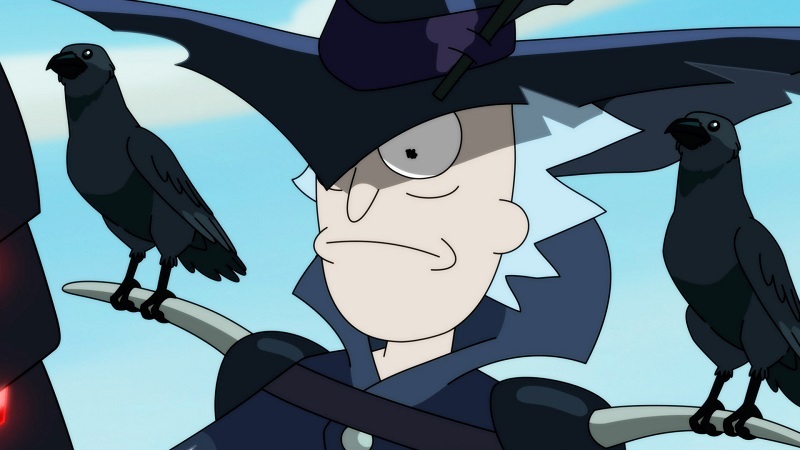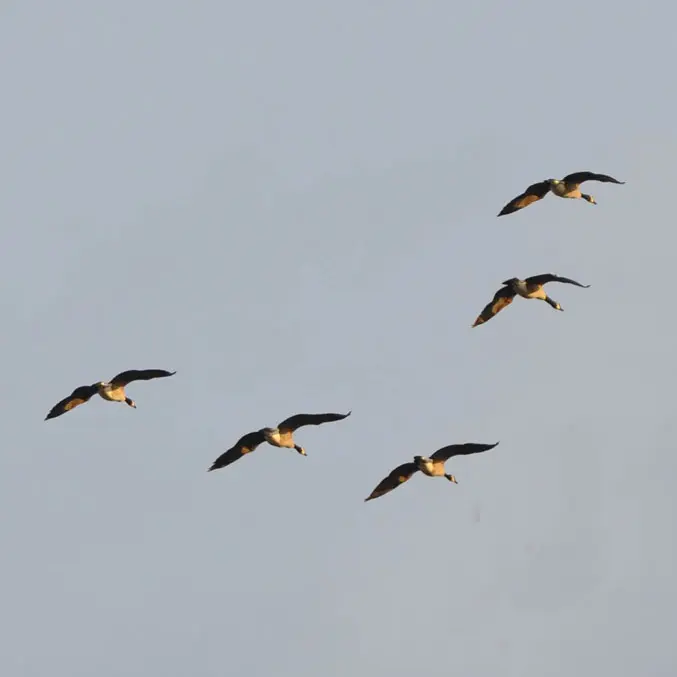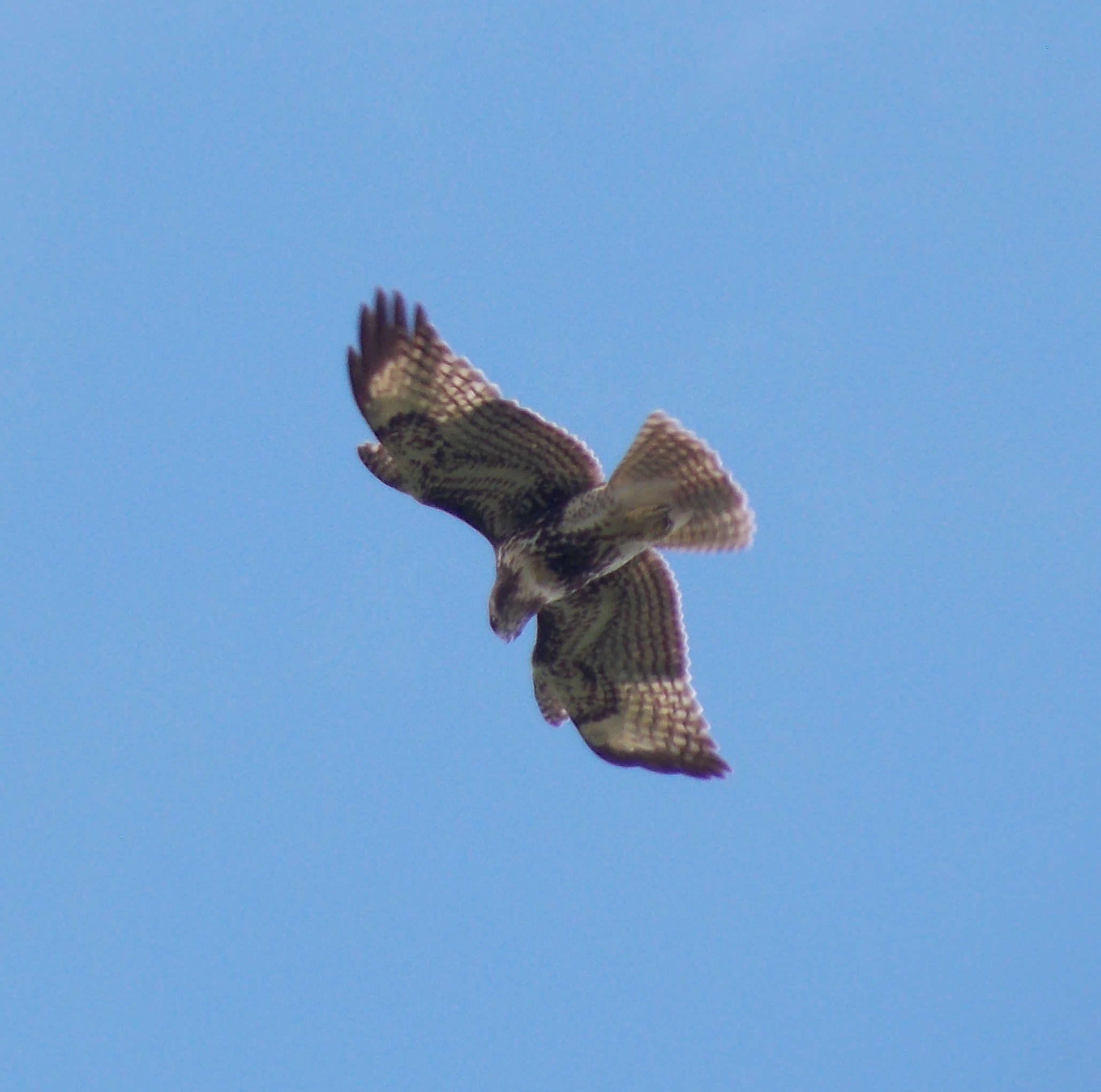By Diana Kwon on November 2, 2022
Crows are some of the smartest creatures in the animal kingdom. They are capable of making rule-guided decisions and of creating and using tools. They also appear to show an innate sense of what numbers are. Researchers now report that these clever birds are able to understand recursion—the process of embedding structures in other, similar structures—which was long thought to be a uniquely human ability.
Recursion is a key feature of language. It enables us to build elaborate sentences from simple ones. Take the sentence “The mouse the cat chased ran.” Here the clause “the cat chased” is enclosed within the clause “the mouse ran.” For decades, psychologists thought that recursion was a trait of humans alone. Some considered it the key feature that set human language apart from other forms of communication between animals. But questions about that assumption persisted. “There’s always been interest in whether or not nonhuman animals can also grasp recursive sequences,” says Diana Liao, a postdoctoral researcher at the lab of Andreas Nieder, a professor of animal physiology at the University of Tübingen in Germany.
In a study of monkeys and human adults and children published in 2020, a group of researchers reported that the ability to produce recursive sequences may not actually be unique to our species after all. Both humans and monkeys were shown a display with two pairs of bracket symbols that appeared in a random order. The subjects were trained to touch them in the order of a “center-embedded” recursive sequence such as { ( ) } or ( { } ). After giving the right answer, humans received verbal feedback, and monkeys were given a small amount of food or juice as a reward. Afterward the researchers presented their subjects with a completely new set of brackets and observed how often they arranged them in a recursive manner. Two of the three monkeys in the experiment generated recursive sequences more often than nonrecursive sequences such as { ( } ), although they needed an additional training session to do so. One of the animals generated recursive sequences in around half of the trials. Three- to four-year-old children, by comparison, formed recursive sequences in approximately 40 percent of the trials.
This paper prompted Liao and her colleagues to investigate whether crows, with their renowned cognitive skills, might possess the capacity for recursion as well. Adapting the protocol used in the 2020 paper, the team trained two crows to peck pairs of brackets in a center-embedded recursive sequence. The researchers then tested the birds’ ability to spontaneously generate such recursive sequences on a new set of symbols. The crows also performed on par with children. The birds produced the recursive sequences in around 40 percent of trials—but without the extra training that the monkeys required. The results were published today in Science Advances.
The discovery that crows can grasp center-embedded structures and that they are better at doing so than monkeys “is fascinating,” says Giorgio Vallortigara, a professor of neuroscience at the University of Trento in Italy, who was not involved in the work. These findings raise the question of what non-human animals might use this ability for, he adds. “They do not seem to possess anything similar to human language, thus recursion is possibly relevant to other cognitive functions," he says. One speculation is that animals might use recursion to represent relationships within their social groups.
When the 2020 study on recursive capacities in humans and monkeys was published, some experts remained unconvinced that the monkeys understood recursion. Instead, some argued, the animals chose the recursive sequences by learning the order in which the brackets were displayed. For example, if the training sequence was [ ( ) ], and the monkeys were later shown a different pairing, such as ( ) and { }, they would first pick a bracket they recognized from training, then pick the new bracket pair they had never seen before. Finally, they would pick the matching bracket from the training session at the end of the sequence (because they had learned that the matching bracket comes at the end).
To address this limitation, Liao and her colleagues extended the sequences from two pairs to three pairs—such as { [ ( ) ] }. With three pairs of symbols, the probability of producing the sequences without grasping the underlying concept of recursion becomes much lower, Liao says. Here, too, the researchers found that the birds were most likely to choose center-embedded responses.
Some scientists remain skeptical. Arnaud Rey, a senior researcher in psychology at the French National Center for Scientific Research, says the findings can still be interpreted from a simple associative learning standpoint—in which an animal learns to link one symbol to the next, such as connecting an open bracket with a closed one. A key reason, he explains, lies in a feature of the study design: the researchers placed a border around the closed brackets in their sets—which the authors note was required to help the animals define the order of the brackets. (The same bordered layout was used in the 2020 study.) For Rey, this is a crucial limitation of the study because the animals could have grasped that bordered symbols—which would always end up toward the end of a recursive sequence—were the ones rewarded, thus aiding them in simply learning the order in which open and closed brackets were displayed.
In Rey’s view, the notion of “recursive processing” as a unique form of cognition is in itself flawed. Even in humans, he says, this capacity can most likely be explained simply through associative learning mechanisms—which is something he and his colleagues proposed in a 2012 study of baboons—and to date, there have been no satisfactory explanations of how the ability to recognize and manipulate such sequences would be coded in the human brain. According to Rey, researchers currently fall largely into two camps: one that believes that human language is built on unique capacities such as the ability to understand recursion and another that believes it emerged from much simpler processes such as associative learning.
But Liao notes that even with the help of the borders, the crows still had to figure out the center-embedded order where open and closed brackets were paired from the outside in. In other words, if the birds only learned that open brackets were at the beginning of the sequence and closed ones were at the end, you would expect an equal proportion of ( { ) } mismatched and correct responses. But, she says, her and her colleagues found that the crows chose more of the latter than the former, even with the more complex sequences of three pairs of brackets.
For Liao, seeing that birds whose ancestors long ago diverged from those of primates on the branching evolutionary tree of life—also appear to be able to parse and generate recursive sequences implies that this capacity is “evolutionary ancient” or that it developed independently as a product of what is known as convergent evolution. Because birds’ brain lacks the layered neocortex of primates, this observation, Liao adds, suggests that the latter brain architecture may not be necessary for displaying this cognitive ability.
For Mathias Osvath, an associate professor of cognitive science at Lund University in Sweden, who was not involved in the new paper, its findings fit into a long line of studies indicating that birds possess many of the same cognitive skills as primates. “To me, this just adds to the catalog of amazing data showing that birds have been completely misunderstood,” Osvath says. “Saying that mammals took over the world cognitively is just simply wrong.”
I am generally not great at interpreting papers like this, so I want to ask: 40% success rate is essentially random in this setting, yes?
25% success rate would be random in a 4-answer multiple choice test, but any% is not random in constructive tasks. Like if waves washing over the shore left behind fully-constructed sand castles 1% of the time, we wouldn’t dismiss it as random.
The recursive sequences have factorial possibilities, so 40% is probably not random.
Thank you so much!
if waves washing over the shore left behind fully-constructed sand castles 1% of the time
I do want to see this tho 🙂
To be clear, and five@slrpnk.net that it can be random, but not evenly distributed. The question is statistical significance, you can have a very low rate of occurrence but have it be statistically significant, such as say, cancer rate increases from exposure to a heavy metal. Technically very low increases, maybe a few factions of a percentage point, but statistically significant, you know that the heavy metal is very likely to be the source.
You can have the opposite, a very highly likelihood of occurrence, but no statistical power with the input variable of interest. For example, flipping a coin has a 50% chance of landing on heads. But across enough tests, it’ll be very clear saying “heads” before flipping the coin has no statistically significant effect on the coin flip.
Not sure I understand how the brackets are a good stand-in for recursion like a subclause in a sentence.
If they are recognising symmetry visually, that’s still a skill but feels like an entirely different concept to me.
I love the crows!
One speculation is that animals might use recursion to represent relationships within their social groups.
Seems logical enough. Identifying a crow as “one of the family” vs. “someone who’se been helpful” or “some random crow” may convey practical benefit when favours are exchanged.
I would add another guess: birds often feed on fruit, and might have need for a concept of “empty” vs. “full”. A tree might be empty of fruit, or full of fruit, a nest might be empty, or it might be occupied, there might be X eggs in the nest, or X+1 (cuckoo has raided the nest) or X-1 (predator has raided the nest).
If some skill is useful for a particular form of life, those creatures who need it will acquire the skill. :)
I know I’ve always believed in the capabilities of crows!

It’s an interesting idea, but a 40% success rate doesn’t really indicate that they understand. That could simply be luck. Couldn’t they be choosing completely at random and still get 40% positive results?




